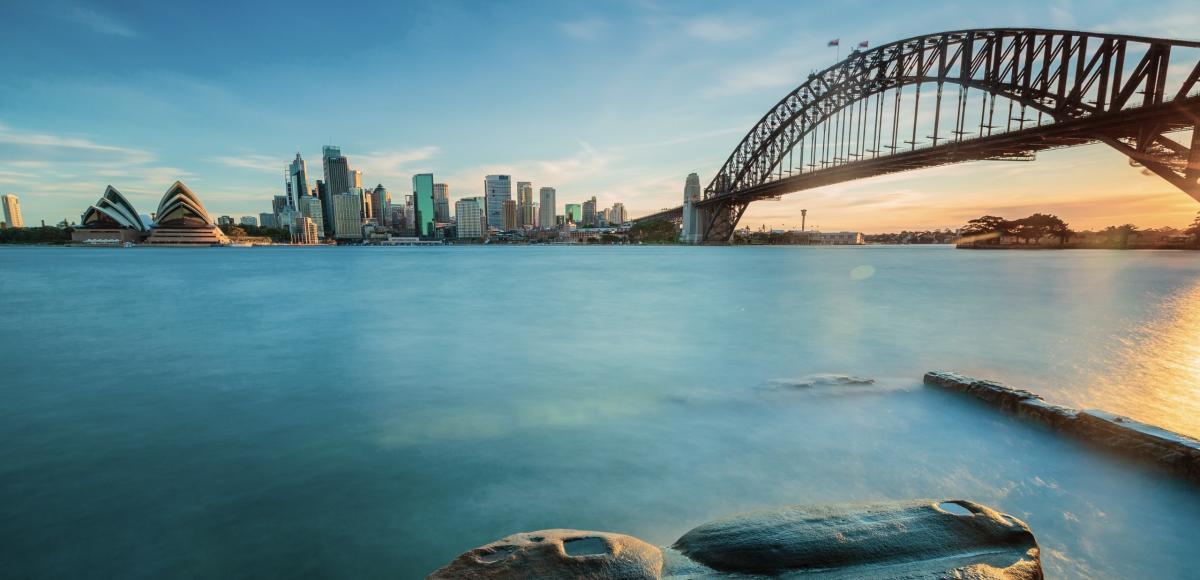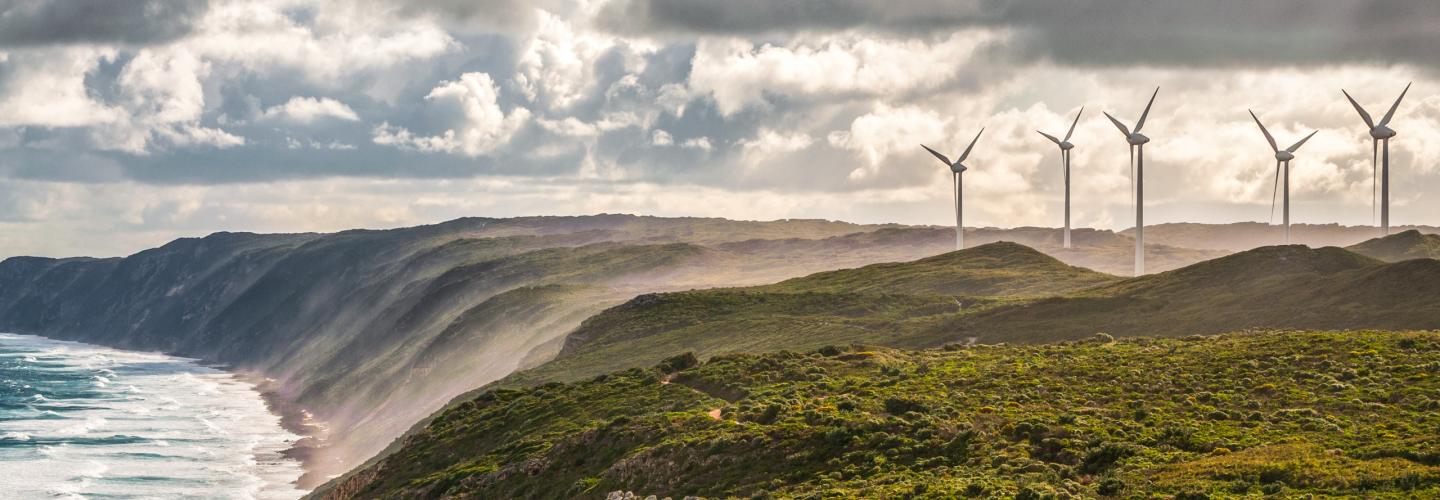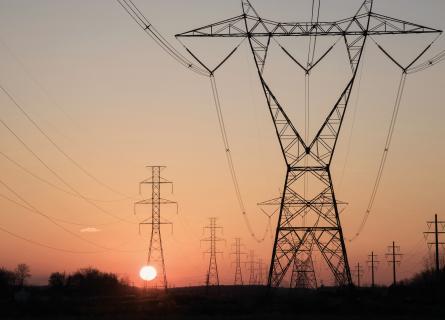
Going green down under
When Australia leverages all its geographic advantages, it could install plenty of renewable energy capacity and deliver power for the transition to net-zero by 2050.
Australia could take a global leadership role in transitioning from fossil-fuels to renewables while creating competitive advantages for the Australian economy, industry and investors alike.
Momentum for renewables – here we go
In 2022, Australia raised the bar by pledging to cut carbon emissions to 43% below 2005 levels by 2030, and to net-zero by 2050.
Up until now, Australia has been somewhat more moderate in its investments in renewables when compared to some other countries. Now it will increase the speed of installation of renewable capacities: the recent 2050 net-zero pledge has unleashed a wave of enthusiasm for the energy transition. The new target will provide opportunity for very large investments in renewables at pace - a once in a lifetime opportunity for an entire continent.
The net-zero pledge is strongly supported by the recent October 2022 federal budget commitments to renewable energy projects. This includes critical infrastructure projects, for example, transmission projects, which will enable the expansion of renewable energy generation and energy storage.
Already, the current willingness and excitement, both among the federal government and the state governments, among industry, investors and developers alike, is swiftly increasing the drive towards net-zero – now is the time for investors and developers to invest into a bright Australian future.
From coal to green
There is a non-negotiable mandate to maintain a secure and reliable energy supply at an acceptable and affordable cost for consumers during the energy transition and beyond
However, energy-transition challenges are repeatedly getting a lot of public attention: ageing coal-fired power plants with an increasing reliability risk (recent unplanned outages in 2022 have proven that there is a severe risk of a disruption of the power supply) and recent increases in power bills for consumers.
The ageing coal-fired power plants continue to operate based on investments which were made decades ago, allowing them, at present, to remain somewhat competitive. Yet when renewable generation is high during sunny and windy days, coal-fired powered plants may still come under cost pressure in the market. Thus, there is an increasing risk of an early phasing out of ageing coal plants – so, now there is a need and the opportunity to act by installing renewable energy systems at a very fast and accelerated speed.
All together - but all at once, please
The success of the energy transition hinges on the involvement and management by all stakeholders of a meticulously orchestrated, planned and executed transition to renewables.
The energy transition is not only a technical challenge but also an enormous investment opportunity for governments, investors, developers, and the wider industry - AEMO’s publication of the "singular scenario" in the Integrated System Plan (ISP) has already indicated a need for acceleration of investment and development activities in order to stay on target.
We can already foresee that there will be renewable energy generation and storage solutions deployed on an unseen GW-scale, including large investments into pumped-storage hydropower projects. Storage solutions need to be accelerated especially, as they are the least advanced in the renewable energy transition to date.
In addition, the hydrogen economy is gaining momentum faster than ever seen before. All the while, consumers increase their uptake on small-scale power generation, storage and e-mobility, which need to be integrated into the power grid.
The grid is key The current grid was designed and built prior the 1970s around large, centralised coal-fired baseload power plants and hydropower generation. The grid is now ageing, facing connection and congestion challenges with renewable energy generation coming online fast.
More than ever before, the electrification of Australia’s renewable energy economy depends on the grid. When deploying new, decentralised large-scale renewable energy generation and storage at GW-scale, the current grid may soon reach capacity and transmission limits.
Grid upgrades will be key to connecting consumers with renewable energy generation and storage locations as preferred renewable energy generation and storage locations may not be situated in places with existing high-capacity transmission lines.
New transmission lines or upgrades require major investments to mitigate congestion and economic risks to both owners and operators. Historically, transmission upgrade projects are complex and need to comply with countless regulatory requirements, with long lead times. Yet, Australia needs to act fast now to get renewables online, at the required speed.
The electricity markets, including Australia’s largest National Electricity Market (NEM), now need to address the future grid requirement in real time to keep the grid resilient and stable, now and in the future, and to keep energy prices low for consumers. The regulatory re-design is a work in progress for the NEM2025 – while the debate is ongoing, fast decision making is required to remove investment barriers and not stifle the energy transition momentum. On the flipside, progress is emerging, creating a pathway to more investment certainty, such as the introduction and planning of Renewable Energy Zones (REZ), which are the renewable electron highways, connecting new, decentralised renewable supply to consumers.

Green rush
The opportunities for Australia’s economy, investors and developers are enormous, and are growing by the minute. The pathway towards becoming a global energy transition leader is real and Australia could make a significant contribution to reducing emissions and to limiting the global temperature rise.
In the long term, the net-zero economy has the potential to offer low-cost electricity from the large-scale, GW-scale renewable generation, with the load-balancing benefits from energy storage solutions, including expansions and new developments of pumped-hydro and battery storage.
The ability to leverage low-cost green energy at GW-scale could make the growing export businesses globally competitive and meet the increasing demand for global decarbonised products. The global demand for green hydrogen and green iron ore / green steel is growing fast. Australia can build the foundations for a local green society to reach the 2050 net-zero target and become a globally competitive green export economy. Australia can once again be the lucky and green resource rich country, with the ability to make a globally relevant contribution to limiting temperature increases.
With Australia’s 2050 net-zero target, its budget funding commitments, policy and regulatory changes being reviewed, alongside increasing public support and growing recognition of the need to address climate change, a strong need for advisory services is emerging, as Australian companies adapt their strategies.
AFRY Management Consulting is expanding its physical presence with the establishment of a new office location in Australia, allowing us to deliver our expertise and experience to a broader set of clients and partners in Australia. We are committed to accelerating the energy transition and are passionate about creating value for clients and society. AFRY Management Consulting has experienced Australia’s energy transition challenges on a global scale – AFRY Management Consulting has developed and delivered proven solutions and value to clients, and can deploy solutions to Australia fast – at a speed required by all stakeholders.
AFRY Management Consulting has a dedicated team of over 600 management consultants and energy experts, across over 20 offices on five continents, supported by 19,000 experts at AFRY in design, engineering and digitalisation. AFRY Management Consulting has to date advised more than 1000 clients across all areas of the energy transition from thermal generation, pumped hydro to offshore wind, from trading to customer solutions and from corporate strategy to operational efficiency.



